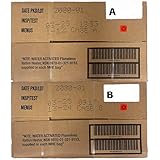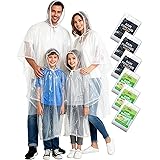When is the Best Time to Stock Up on Emergency Supplies?
- Seasonal Community Awareness and Events
- Natural Disaster Preparedness
- Sales and Discounts on Emergency Supplies
- Personal Emergency Risk Assessment
Seasonal Community Awareness and Events
Understanding Seasonal Patterns
When it comes to stocking up on emergency supplies, I’ve found that being aware of seasonal patterns makes a world of difference. For instance, as summer rolls around, there’s a greater chance of storms and hurricanes. That’s when local communities often rally together and flex their emergency preparedness muscles. They host workshops and seminars that can really help keep everyone informed. It’s a great time for me to check in on my supplies, ensuring I am as prepared as possible.
For example, every year, my neighborhood organizes an event focused on disaster preparedness. It’s not only a good learning opportunity but also a community bonding experience. I love seeing everyone come together, sharing advice on what to prep for based on past weather events. These community events are a great reminder to revisit my emergency supplies list.
Plus, there’s always that friendly nudge I get from more seasoned preppers in my area. They’ve been through it all and they’re more than happy to share their hard-earned wisdom. So, seasonal awareness isn’t just about me; it’s about being part of a community that looks out for each other.
Tapping into Local Government Resources
Another vital aspect I discovered is leveraging local resources. Often, local government websites will post information about emergency preparedness month or other awareness campaigns. When I take the time to read up on what’s being discussed, I ensure I’m not missing out on critical updates or resources being offered. These often include free workshops and local distribution of emergency kits.
Sometimes, local organizations even partner with grocery stores or retailers to provide bundles at a discount. This is a great opportunity to snag those supplies I may have overlooked. By utilizing community resources effectively, I can bolster my emergency kit without breaking the bank.
Staying Informed through Social Media
Let’s not forget about social media! I routinely check local groups and pages, especially as storms approach. Those real-time updates from my community help me gauge what others are doing in terms of preparation. It’s like having my own instant support network. If someone shares that they just stocked up on non-perishables, it often inspires me to do the same.
Moreover, following organizations that specialize in disaster relief on social media provides me with valuable insights and tips. They’re always sharing information on when to prepare and what the latest trends are in emergency supplies. This knowledge helps me not just for my family, but also to assist neighbors who might not be as prepared.
== > What if ... Get a FREE Subscription to PREPARE
Natural Disaster Preparedness
Evaluating Historical Data
When I think about preparing for emergencies, I often look back to historical patterns. Understanding the frequency and impact of past disasters in my area really helps me gear up for what could come next. For instance, living on the coast means hurricanes are a very real concern for me, and paying attention to data on previous storm seasons can really inform my supply stock-up times.
Meteorological projections often play into this, too. Keeping up with these trends makes me less reactive and more proactive. Instead of waiting until a storm is announced, I’ve learned to keep a well-stocked emergency kit ready throughout hurricane season.
Identifying Risks Specific to My Area
In addition to seasonal storms, I’ve also made a habit of identifying other risks specific to my area. Do I live near fault lines? Am I in a region prone to wildfires? Knowing these risks means I can tailor my emergency supplies to have everything I need for different scenarios. It’s a bit of an investment in peace of mind, honestly.
In some cases, there are unique supplies I find beneficial based on those risks, like Wildfire kits or earthquake supplies. Preparing for a range of potential disasters helps me feel a little more in control, and it gets me thinking about what my family might need in those critical moments.
Regular Supply Check-Ins
One thing I’ve found super valuable is making regular check-ins on my emergency supplies. This isn’t just a one-and-done deal! I usually do this quarterly, inspecting items such as food, batteries, and medical supplies. It’s crucial to ensure everything is viable and within expiration dates. The last thing I want is to find my emergency food supply is outdated just when I need it!
Making a checklist keeps me organized and ensures I don’t overlook anything essential. I also use these opportunities to restock anything that’s been used or that I might have forgotten about. It’s all about preparation – if that means double-checking the stock, then I’m all in!
Sales and Discounts on Emergency Supplies
Understanding Retailer Cycles
Now, let’s talk sales! I’ve discovered that understanding retailer cycles has allowed me to stock up on emergency supplies at a fraction of the price. Major retailers often have certain times of the year when they mark down camping gear, first aid kits, and emergency essentials. That back-to-school season might seem unrelated, but it’s when outdoor stores blow out summer stock and I can score some great deals.
Even around holidays, I’ve found significant discounts on non-perishable food items. Who knew Thanksgiving sales could serve a dual purpose for emergency supplies? I always keep an eye out for sales flyers that land in my mailbox or online. Planning my shopping around these sales events not only helps me save money but allows me to gather a more robust stockpile.
Utilizing Coupons and Loyalty Programs
I’m a sucker for coupons! I’ve also learned that many stores have loyalty programs that can give me exclusive deals and early access to discounts. By accumulating points or rewards, I can often score supplies at a much lower cost. For instance, a local grocery chain has quarterly sales where loyalty members can stack discounts on canned goods, which is a win for my emergency pantry.
Plus, it’s fun to mix and match with other coupons I find online. I have a bit of a strategy going on with my couponing endeavor and emergency supply shopping that often leads to significant savings. It feels great to know I’m prepping for the worst without overspending!
Participating in Food Drives and Charity Events
Another interesting approach I’ve discovered is participating in food drives and charity events. Not only do I feel good about contributing, but I’ve also been able to gather useful items for my emergency supplies at the same time. Some local charities collect supplies for families affected by disasters, and they often provide great deals or product donations of non-perishable items I can later use for my kit.
It’s such a win-win! Alongside the personal gain of gathering supplies, I also help those in need. Engaging with community efforts around me has kept me informed and inspired to keep my own stash stocked while staying humble and generous.
Personal Emergency Risk Assessment
Assessing My Home and Family Needs
One of the most essential aspects for me has been assessing my home and family needs. Everyone’s situation is different, and my approach to emergency supplies should reflect that. For example, we have a young child and a pet, so I always ensure I prioritize supplies that not only address adult needs but also consider them. It’s vital to think ahead about what my family might require and stock accordingly.
This includes food items that are suitable for children and pets, medications, and other essential goods. Involving the whole family in this process also helps! I often ask my little one what they think they might want in case of an emergency — you’d be surprised at the input I get from them!
Location-Based Considerations
Being conscious about where I live also informs my risks and preparations. Living on the coast means I have a unique set of disaster scenarios to prepare for, whereas friends inland might think more about tornadoes and flooding. It’s crucial to look into what natural disasters are typical for your location and stock accordingly.
People in mountain regions have different needs, such as preparation for snowstorms and power outages. Understanding these aspects allows me to pack differently and select supplies that are truly suited to my personal risks.
Creating a Customized Emergency Plan
This whole process culminates in developing an emergency plan that’s unique to my family. I often sit down with my loved ones and discuss what we would do in various scenarios. Having a plan keeps us calm and collected in times of crisis, so we’re not left scrambling for what to do.
This plan not only outlines what supplies to gather but also includes communication strategies and meeting points in the event of an evacuation. The clearer I am about our responses, the less panic we will feel if the worst happens. And you know what? It’s also a little comforting to have that level of preparedness.
FAQ
When is the best time to stock up on emergency supplies?
The best time to stock up is often before severe weather or disaster seasons, with events during seasonal community awareness serving as crucial reminders. Keep an eye on local activities and campaigns to know when to get prepared.
How can I assess my personal emergency risks?
Start by considering the historical data for your area and think about the specific weather events or disasters that are common. Evaluate your home, family needs, and location to make a personalized risk assessment.
Are there specific times of year when sales on emergency supplies occur?
Definitely! Key sales often happen during back-to-school seasons, holidays, and specific retailer cycles. Paying attention to these times can help you snag supplies at unbeatable prices.
How often should I check my emergency supplies?
I recommend checking your emergency supplies at least every three to six months. Regular check-ins help keep your stock fresh and relevant, ensuring that all items are usable when you need them.






